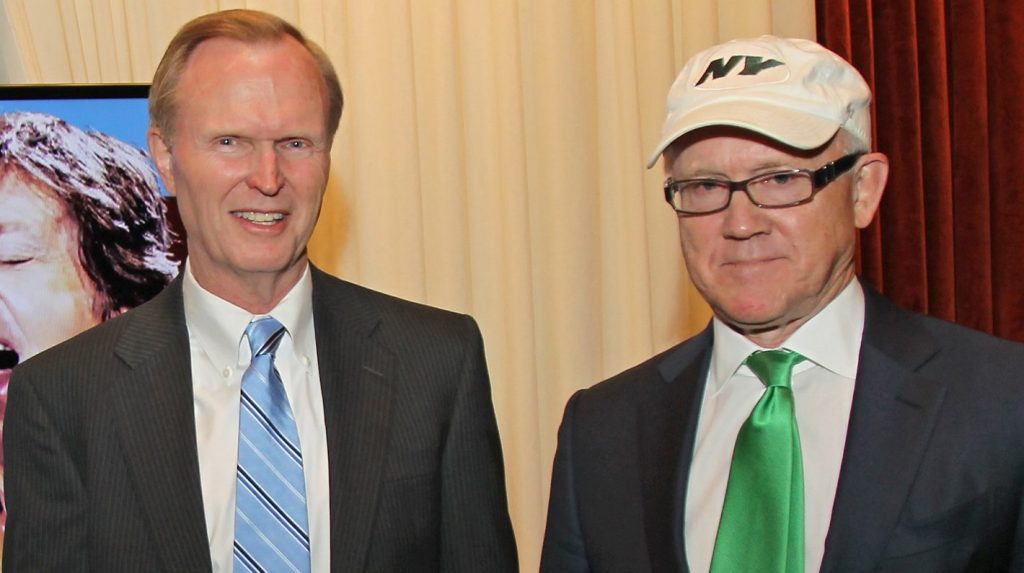The New York Giants and New York Jets will keep the MetLife Stadium surface as artificial turf instead of switching to natural grass in 2024, despite plans to briefly introduce temporary grass for the 2026 World Cup. There has been continuous demand from players and fans in recent years for the change.
Giants president and CEO John Mara communicated the decision at the NFL League Meetings on March 25 and provided an explanation for those interested.
“I want to get to the point where the experts can inform us that late in the season we can have a safe, playable grass field, and when we get to that point, then maybe we’ll make the switch,” Mara told NYG media members in attendance (via NorthJersey.com insider Art Stapleton).
“We’re not there yet,” he continued. “With the amount of events in our building, particularly during the football season, having two teams there and how many times last year we had back-to-back games where it rained during the first game, I can’t imagine what a grass field would’ve looked like on a second day.”
It does not seem likely that Giants and Jets players and fans will see their wish fulfilled in the near future.
Giants President & CEO John Mara Rejects Injury Claims About MetLife Turf
The NFLPA — as well as many athletes — have publicly advocated for a leaguewide requirement to switch all playing surfaces to natural grass. They believe that artificial turf leads to more non-contact injuries — although the exact data on turf vs. natural grass is still under debate according to AP News.
Mara disputed these claims on March 25.
“There’s virtually no difference in lower leg injuries on grass and turf,” the NYG co-owner stated definitively. “That’s a fact.”
“Last year, there were twice as many ACLs on grass as there was on turf,” Mara continued. “Now, that’s one year worth of data, but this is research that is done and statistics that are kept in conjunction with the players’ association, so there’s no mystery about this.”
He did acknowledge that “players prefer playing on grass.”
“There’s no question about it,” Mara conceded, expressing: “I’d like to get there some day but we’re not there yet.”
According to a study conducted by The American Journal of Sports Medicine in 2018, “synthetic turf surfaces have a causal impact on lower extremity injury.” Research from this study found that there were 16% more injuries per play on artificial turf compared to grass from 2012 through 2016.
However, a turf supporter might argue that this information is outdated due to newer updates to artificial surfaces.
“There’s always evolving technology, both with grass, but especially with artificial turf,” Dr. Calvin Hwang (Stanford, San Jose Earthquakes) told AP News. “The newer generation turfs may be safer than older generation turfs. And so, studies that were done five or six years ago may not be including some of those newer generation turfs.”
The Giants and Jets updated the MetLife turf ahead of the 2023 season, switching from “UBU Speed S5-M to FieldTurf Core HD,” per Stapleton.
Artificial Turf Is Typically More Cost-Effective for Cold-Weather Franchises
Artificial turf is usually more affordable for cold-weather teams like the Giants and Jets, per ESPN.
“A professor of turfgrass research at Michigan State estimated that a natural grass field could cost a cold-weather team $2 million to $3 million per year to maintain, with $400,000 needed each time it’s replaced, ESPN reported in October of 2023. The Capital Improvement Board stated that turf would cost about $1.25 million to install and maintain.”
The ESPN article mentioned that prices can vary depending on the market.
ESPN also quoted a statement from NFLPA president JC Tretter at the time. He said, “It shouldn’t be this hard,” last October. “We believe the data has proven our point. We feel the player opinion is consistent. There are only two groups of people that disagree with us at this point: People who manufacture turf and the NFL.”
World Cup Regulations Will Not Alter Giants & Jets Plans for NFL Surface
One of the requirements for a FIFA host stadium for the 2026 World Cup is a natural grass surface. MetLife Stadium will host various matches throughout and the 2026 World Cup Final, which is a great honor for the Giants and Jets’ organizations.
The NFL does not currently have such requirements for their playing surfaces.
“The type of grass being installed for the World Cup is not suitable for football,” Mara explained. “It’s a completely different type of surface.”
“They’re more concerned with how the ball bounces rather than anything else,” he noted. “It’ll be a temporary grass field that goes down, and that’s great in June and July. No matter how many times you change it out — and we tried this back in ‘99 to 2001 with the trays for the natural grass field — it was not a pretty sight in December and January.”
“Once again, I believe we can achieve that someday,” Mara concluded. “I'm just not satisfied that we’re there yet.”



